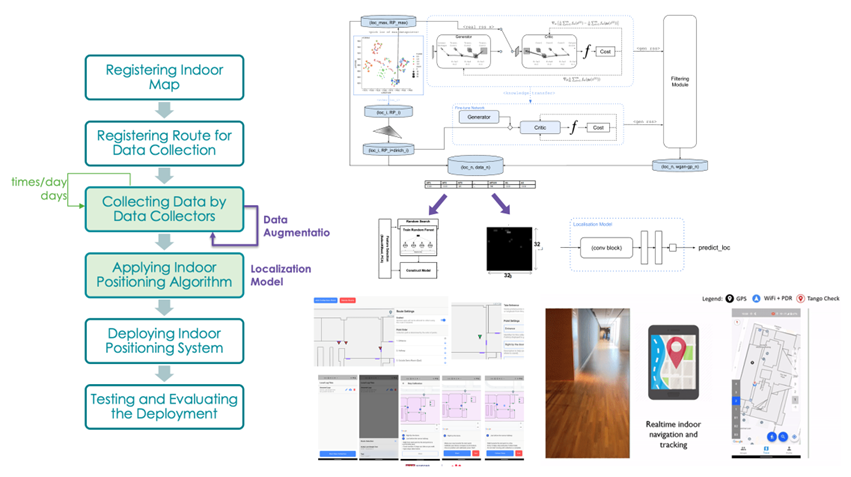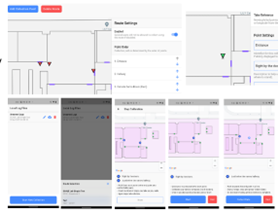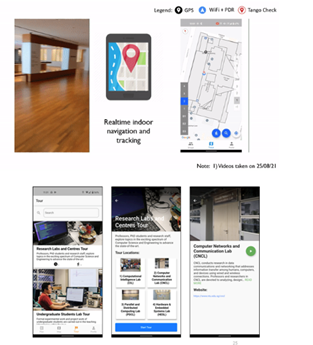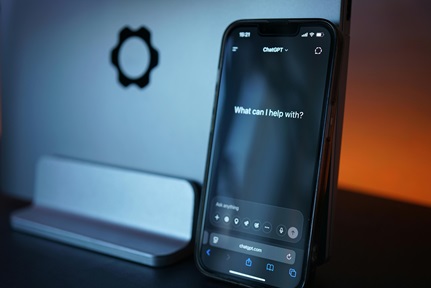
A Data-Driven Framework for an Enhanced Indoor Localisation and Positioning Precision
Synopsis
This invention presents a Wi-Fi Positioning System (WPS) that enables accurate indoor positioning via Wi-Fi signals, as GPS is often unreliable indoors. By employing novel data generation techniques, this system enhances the data collection process. It is applicable to products requiring indoor positioning, such as navigation, augmented reality and health applications.
Opportunity
Indoor positioning is crucial for accurately locating individuals or devices inside buildings, where satellite signals are often obstructed. WPS bridges the gap left by GPS/GNSS and can be widely deployed in common areas like airports, shopping malls and universities. However, Wi-Fi RSSI data has limitations due to factors like free-space loss, reflections and multipath propagation. Additionally, indoor localisation using machine learning requires extensive data for training prediction models.
This invention presents an end-to-end system that addresses these issues by enhancing positioning accuracy through a data-driven approach, including a data augmentation pipeline and adaptations to the feature extraction process of the localisation model, which can also be incorporated into existing neural-network-based localisation systems. The system’s viability has been demonstrated through the SingTourX indoor tour app, tested in public spaces and the College of Computing and Data Science at NTU. This technology is of interest to researchers and companies seeking to utilise indoor localisation systems, with opportunities for technology licensing and co-development ventures via industry partner NCS.
Technology
This invention presents extendGAN+, a comprehensive and transferable framework for indoor localisation. This technology leverages generative adversarial networks (GANs) for data augmentation and employs two data-driven models: a grid-based method and a convolutional neural network (CNN) for location prediction.
The extendGAN+ framework creates synthetic data, reducing the need for extensive data collection, while adapting seamlessly to different environments. Users can choose between the grid-based method, which automatically fine-tunes hyperparameters and examines the impact of features, and the CNN model, which utilises a residual network for feature extraction. This technology simplifies data generation and enhances localisation accuracy, offering a versatile solution for improving indoor positioning.

Figure 1: Overview of the Proposed Technology.

Figure 2: UI of Data Collection Mobile Application.

Figure 3: UI of SingTour Mobile Application.
Applications & Advantages
This technology can be applied in navigation systems, augmented reality, indoor robotics and healthcare. It has been demonstrated in the SingTourX app, which uses machine learning with RSS data from detected Wi-Fi access points to estimate users’ locations. Testing has been performed in public spaces and at the College of Computing and Data Science at NTU.
Advantages:
- Alleviates the time-consuming and labour-intensive process of data collection
- Enhances the quality of augmented data for training models
- Augments data effectively, even with smaller datasets
- Offers potential commercial applications in data-driven, signal-based fingerprint systems



.tmb-listing.jpg?Culture=en&sfvrsn=462ec612_1)

.tmb-listing.jpg?Culture=en&sfvrsn=55153609_1)









